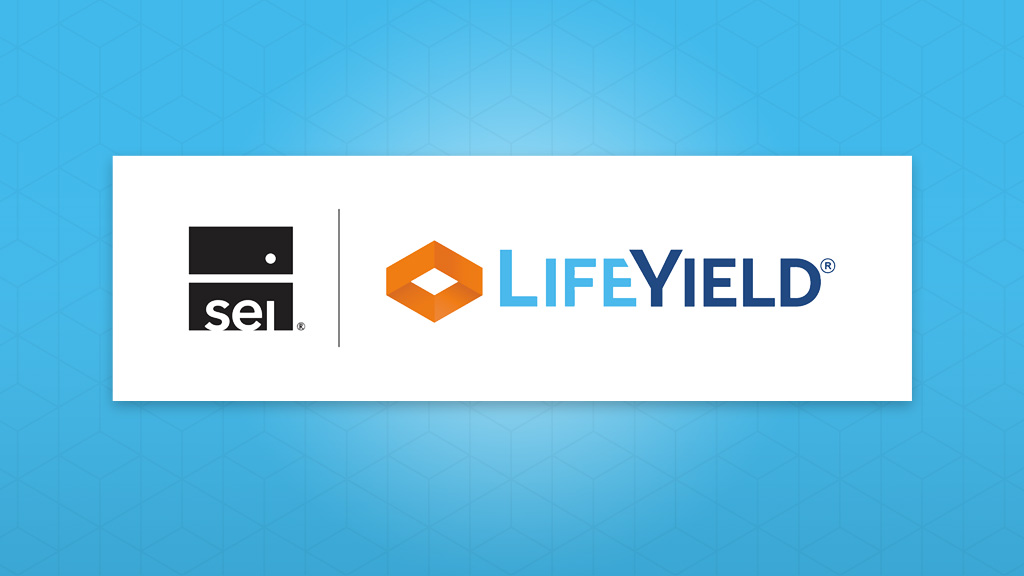Why Taxes Matter in Financial Planning?

What is financial planning and how can it help clients achieve their financial goals?
Let’s start with a basic definition of financial planning. Financial planning is the process of setting goals and creating a plan for how to achieve them. Financial advisors use financial planning software to help their clients maximize their wealth, plan for retirement, and make informed decisions about their investments. By using financial planning, advisors can create individualized plans tailored to each client’s specific needs and circumstances, making sure they are on track toward achieving long-term investment success.
The financial planning process typically starts with a review of the client’s accounts and a conversation to define their short- and long-term investment goals. These goals are specific to each investor and can include anything from vacations to paying for college, to a new car, to retiring at a certain age, and anything in between.
When the goals are defined, and the full financial picture is clear, financial planning tools can help advisors determine the best asset allocation for the client’s portfolio that hews to their risk tolerance and provides the greatest likelihood of achieving their investment goals.
Financial planning software is the hub of many firms’ advisor technology platforms today, and firms are working hard on enhancing their financial planning software with additional technology that can boost outcomes for advisors and clients. Tax planning is one of the most important enhancements to financial planning and is the most impactful addition a firm can make to its advisor tech stack. When accumulation and decumulation are executed through a tax lens, everyone benefits.
Benefits
- The firm gets more revenue.
- The advisor grows AUM faster and maintains AUM for longer.
- The client keeps more money working for them during accumulation and can extend the runway of their portfolio by many years through decumulation.
The positive benefits are boundless.
Why do advisors avoid talking about tax planning?
Advisors have been taught to avoid talking about taxes. “I can’t be giving tax advice because I’m not a CPA” is a common objection we hear. It’s listed in the disclosures on everything we share and in the fine print of every agreement we enter. But there are in fact huge tax consequences to giving financial planning and investment advice. Therefore, it’s important to note that there is a BIG difference between tax planning and tax advice, and it’s important for advisors to know how to walk that line.
According to Orion and Forbes, “86% of financial advisors believe that being able to quantify and report to clients the ongoing effect of tax management is essential to growing their financial advice businesses. But it would seem a much smaller number provides anything coming close to real tax planning. Few financial advisors even take the time to collect and review their clients’ tax returns.”
Financial advisors should ideally work with a client’s CPA to cover the full spectrum. We’ve found that Advisors that consider the tax consequences of their recommendations are better prepared to collaborate and get more referrals from CPA partners. Isn’t something as simple as recommending that a client max out their 401k contribution to get an employer match, tax planning?
In summary, tax planning involves financial planning and investment strategies designed to maximize a client’s outcomes while attempting to minimize their investment tax liability over the course of their lifetime. In over simplified language, tax advice refers to the process of filing your taxes, using various tactics and deductions to determine the precise amount a client needs to pay the IRS.
How tax planning fits into a financial plan?
Tax planning is often an afterthought – “Don’t let the tax tail wag the investment dog” – but the reality is that it should have an influence on every financial plan. After all, every recommendation around an investment has an impact on taxes eventually. When thinking about retirement, many costs come to mind immediately: housing, healthcare, traveling, and transportation, to name a few. But it’s the hidden cost of tax drag on a portfolio that can really plague an investor and cut their runway short.
Unlike financial planning, which has become ingrained in the process for many advisors, taxes are still often a black box that advisors avoid. Apart from estimating future tax rates and potential tax brackets, this topic is often glazed over as general rules and not included in a financial planning exercise. Tax management gets left for the investment management process, which is often far too disconnected from the plan.
Implementation matters. Without the right tools to execute a tax-smart financial plan and help guide the subsequent conversations with clients, advisors are left hanging in the wind, talking to clients about a “hidden” nemesis (taxes) they can’t quantify or explain.
Dynamic tax management software can automate this. Especially when discussing a financial plan for clients, taxes need to be accounted for at every turn, in every withdrawal, and in any financial decision advisors help their clients make. In the end, this type of planning can add 33% of value to the life of a portfolio and can be the difference between running out of money and greatly changing your spending, or a successful retirement.
Financial planning defines an advisors practice, it’s not just a tool
Albert Einstein once said “Compound interest is the eighth wonder of the world. He who understands it, earns it; he who doesn’t, pays it”.
Financial planning is more than just investment advisory, more than providing a view with all accounts aggregated into a client portal, and more than building virtual spending buckets. Financial Planning is often the pillar of value that is intended to improve outcomes for your clients, which means it must be accurate and implemented. Financial planning through a tax lens can help you plan realistically for what your clients will get to keep and supercharge the benefits of compound interest.
Creating a financial plan with a technology partner (like MoneyGuidePro, NaviPlan and eMoney) involves a complex, multi-step process that includes:
- Identifying and analyzing a client’s financial landscape
- Evaluating their current and future needs
- Developing investment strategies to meet those needs
- Ongoing monitoring of a client’s financial progress relating to their goals
Goal setting is key to many financial plans today and is often the North Star for financial advisors to use when managing a client’s portfolio. A complete, goals-based financial plan will aggregate accounts, create a balance sheet, set goals, determine the appropriate asset allocation to meet those goals, and monitor progress toward achieving those goals on an ongoing basis. This process is extremely complicated, and without the necessary technology, near impossible to get right. The innovations and accessibility from the firms named above have made financial planning the cornerstone for so many advisors.
Most advisors would like to meet with their clients monthly, quarterly, or semiannually, depending on the time horizon, financial goals, and a client’s investment complexity. During these meetings, advisors should use financial planning software to help track the progress of their client’s portfolios related to their goals. With the assistance of this technology, advisors can also discuss complex topics like tax management and tax planning with ease and simultaneously justify the value of the ongoing work they do for each client.
Let’s talk about implementing a financial plan
When it comes to creating an advisor technology platform, financial planning software is often the backbone. This technology sets the foundation for how an advisor works with new and current clients. LifeYield has developed technology for tax management that can be built on top of existing financial planning systems, helping to make financial planning implementable. This becomes an important differentiator, because the last thing a firm wants to do is contradict a plan by implementing it incorrectly or making assumptions about the client that should have been personalized.
LifeYield can integrate with your financial plan and your back-office portfolio management systems. Building a tax profile for the client, knowing about the investment programs the portfolio qualifies for, understanding which models fit best, knowing when and if a household target can be used to improve tax location, and quantifying tax drag on a portfolio are just a few of the nuances LifeYield has unlocked.
This approach to implementing a plan demonstrates the value of how the investments will be managed and quantifies the value of coordination between the accounts in the plan. With this technology in place, you can shed light on the hidden nemesis of taxes and use it as a call to action. This household approach to implementation allows an advisor to set up a client up for more efficient accumulation, reduce tax drag, and supercharge the effects of compounding interest over time.
The benefits of implementing the financial plan are extremely important, but it’s just the start. How do you extend this type of planning through the decumulation phase of a client’s retirement? With an effective financial plan in place, how can you create the optimal decumulation strategy for each client?
Most retirement income tools on the market suggest that you switch plans. Literally abandoned the plan you used to get this far and use a new one that is meant to help your client use their accumulated wealth to support their spending. That kind of feels like a bait and switch, no?
Enter LifeYield Retirement Income Sourcing. This groundbreaking solution integrates directly with a financial planning system to create automated, personalized, and tax-efficient portfolio decumulation strategies, extending the benefits of financial planning throughout a client’s life.
This integration powers the view into how a client’s assets will be tapped to meet their spending requirements, how to optimize a client’s social security filing strategy, and when and how to make Roth conversions and meet RMDs. Having a guide to reference with a client about their retirement income is usually all an advisor wants. They want something high-Level and easy to explain to illustrate confidence.
What’s next? LifeYield Retirement Income Sourcing can be used to execute your advice
As mentioned before, implementation matters, and we don’t believe in leaving guidance up for interpretation. What is shown in a financial plan should be rooted in facts about the client and should reasonably reflect how their investments will be managed, how trades will be made, and how those will impact the long-term viability of the plan. This analysis is always personalized and uses the precise details of a client’s portfolio and tax profile.
With knowledge of the back-office processes, LifeYield can execute guidance that is accurate and implementable, with a window into the details to see if fractional trading is allowed, if there are minimum cash or balance requirements, and even proprietary research ratings.
What good is measuring tax alpha that never gets realized due to trade rejections?
Integrating LifeYield relentlessly pursues measurable tax alpha and allows you to demonstrate the value that is being delivered to your clients with every action you take.
If you’re responsible for financial planning or implementing trading with your firm, check out the Income Sourcing page or set up a call to discuss our API documentation.
Monthly insights from our Chief Growth Officer, Jack Sharry
Get exclusive insights and interviews from around the industry

 By
By 




